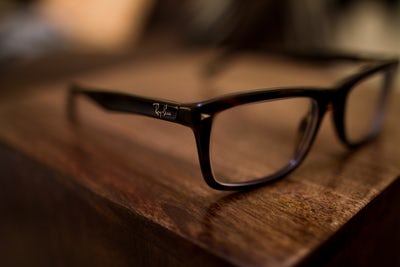By Bill Hull, Director of Marketing
A study published by the Eye Disease Prevalence Research Group reports that blindness or low vision affects approximately 1 in 28 Americans older than 40 years. According to the National Eye Institute, the risk of low vision and blindness increases significantly with age, particularly in those over age 65. Low vision means losing your eyesight (such as loss of peripheral vision; hazy, burred vision; or night blindness) to the point that it makes daily tasks difficult. Normal aging of the eye does not lead to low vision; it is a result of eye diseases or injuries. A person may have trouble recognizing faces, reading, driving and shopping. Even more seriously, today, 6.5 million Americans over age 65 have a severe visual impairment. Experts predict that by 2030, this number will double to over 13 million. Prevent Blindness America reports that the four leading eye diseases affecting older Americans are age-related macular degeneration, cataracts, diabetic retinopathy, and glaucoma. As people age, they are far more likely to have serious age-related eye conditions. Scientists point to terrible daily habits that can cause or worsen severe eye problems and low vision. Here is a list of some of the worst, and unfortunately, the most common for most of us, to avoid:
-
Rubbing your eyes.
Even though it may feel good, rubbing your eyes can actually be quite harmful. The average person touches their face almost 16 times an hour, according to a study by the Journal of Occupational and Environmental Hygiene. Your hands and fingers come in contact with your eyes probably far more than you realize. This creates a high risk that you may transfer bacteria and viruses from your hands to your eyelashes and eyelids, upping the risk for infections like pink eye. Plus, rubbing causes your eyes to feel irritated and that makes you want to rub them more. When you do have to touch your eyes (to remove an eyelash, change your contacts or if something is in your eye), always wash your hands first with warm, soapy water. If your eyes become irritated, instead of rubbing them, try a cold compress instead.
-
Watching TV at night.
Looking at any type of screen in the dark, whether this is a cell phone, television, or computer, is bad for you. Your eyes have to work hard to process the levels of light that are changing rapidly. This can lead to eyestrain, pain, headaches, dry eyes, and redness. It can also interrupt your sleep schedule. Although there isn’t a lot of evidence that says reading in a dim light is damaging to your eyesight, it does strain your eyes. Keep the room well-lit if you’re watching a late movie or finishing a novel before bed.
-
Not wearing your reading glasses or sunglasses.
Presbyopia is the loss of ability to see close objects or read small print. This condition is a normal process that you may not have even noticed before you were in your 40s or 50s when you began to hold reading materials at arm’s length. Some people get headaches or “tired eyes” while reading or doing other close work. Excessive squinting can lead to eyestrain and pain. Thankfully there’s a simple solution: wear your reading glasses! Sunglasses are a great fashion accessory, but their most important job is to protect your eyes from the sun’s ultraviolet rays. Some common medications heighten light sensitivity for seniors. When purchasing sunglasses, look for ones that block out both UV-A and UV-B radiation.
-
Not drinking enough water
When you aren’t getting enough water or are losing too much water due to heat or overexertion, your body starts preserving fluid. Your eyes and tears are some of the first things to go. Tears and eye moisture clean your eyes and prevent infection. Dry eyes can lead to permanent damage from infection,eye strain and vision issues. These vision issues include: double vision, blurring, and sensitivity to light. Being dehydrated can increase the fluid pressure in your eyes, which can lead to glaucoma, corneal edema, and eye swelling.
-
Being overweight
Being overweight increases your risk of developing diabetes and other systemic conditions. Diabetic retinopathy affects nearly 7.7 million Americans age 40 and older. It occurs when small blood vessels stop feeding the retina properly. As the disease advances, you may notice floaters, blind spots or cloudiness of vision. With obesity in America on the rise, and since many people who have diabetes do not know they have it; this is a very serious cause of vision loss and blindness.
Seeing is our most important sense, and one that is easily taken for granted. We all need to do what we can to treasure and protect this amazing capacity.


Recent Comments